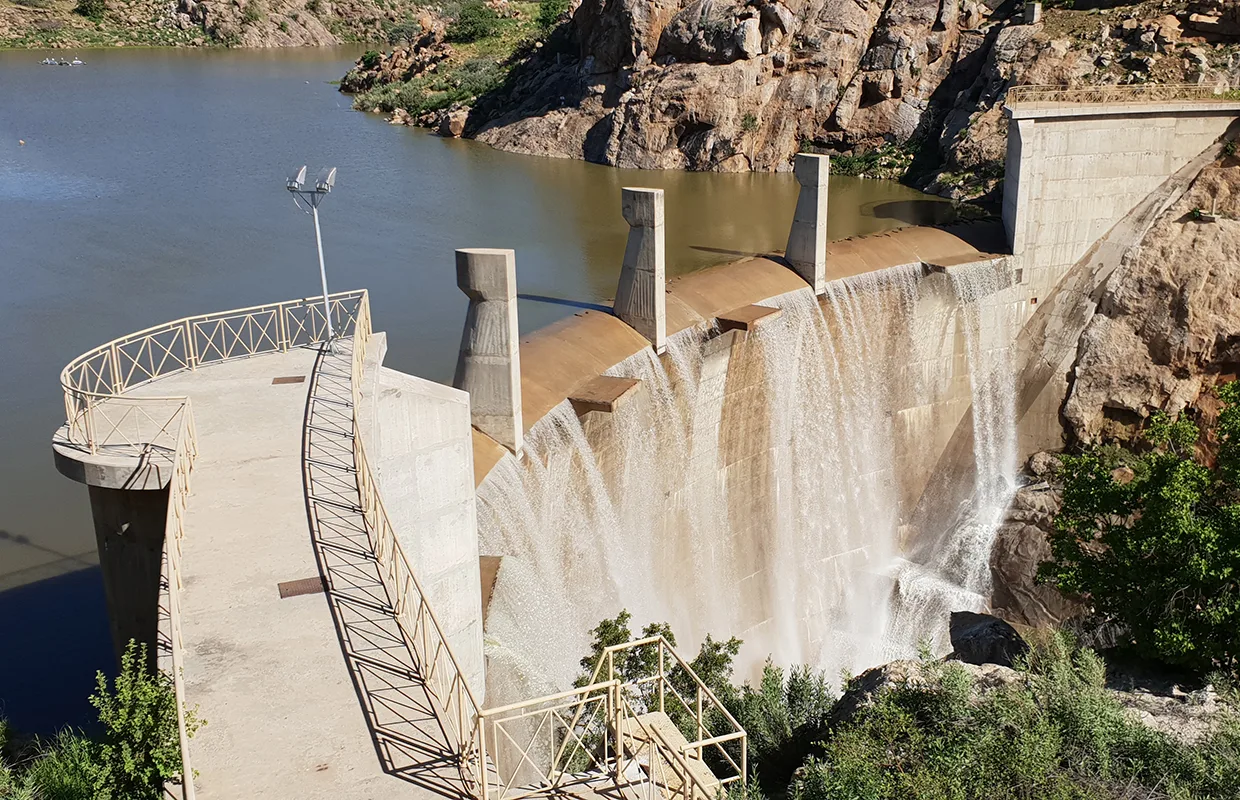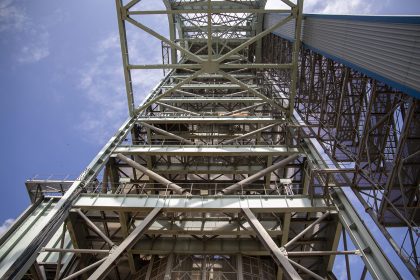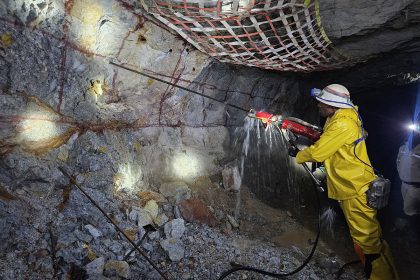NamWater’s transformation in recent years is a story of courage, innovation, and purpose. Abraham Nehemia, CEO since 2019, outlines how the corporation has evolved into a trusted, future-ready utility provider under his expert guidance, powering Namibia’s development through water security.
WATER FOR ALL, FOREVER
Having witnessed tremendous progress since the nation was granted independence in 1990, Namibia’s water supply sector has seen significant expansion in terms of coverage, which has ensured more of the population across both urban and rural areas have access to clean, reliable water.
Under the strategic leadership of CEO, Abraham Nehemia, state-owned water entity, NamWater, has contributed significantly.
“In recent years, we’ve become more resilient, forward-looking, and innovative, placing a strong emphasis on water security and infrastructure modernisation as key drivers for national development,” confirms Nehemia.
The company has undertaken numerous capital projects that form the backbone of Namibia’s water security, contributing not only to water provision across the country but also efforts that support nation-building.
“These projects are not just technical feats – they are broader endeavours designed to sustain urbanisation, agricultural production, industrial growth, and rural development,” he adds.
Of course, the industry has not been without its challenges, faced with ageing bulk water infrastructure of late.
Meanwhile, the demand for water is rapidly increasing due to population growth, urbanisation, and rising living standards – all of which have put additional pressure on supply systems.
“Often, long-distance pipelines are required to serve Namibia’s widely dispersed populations, and addressing water losses from older infrastructure remains a priority,” Nehemia outlines.
Nevertheless, NamWater has proactively initiated several large-scale projects to rehabilitate and upgrade existing infrastructure.
Plans are also in place to enhance rural water supply systems, ensuring that end consumers across the network continue to receive the services they require.
“Looking ahead, we remain optimistic and committed to maintaining momentum as Namibia’s water needs continue to grow,” he reflects.
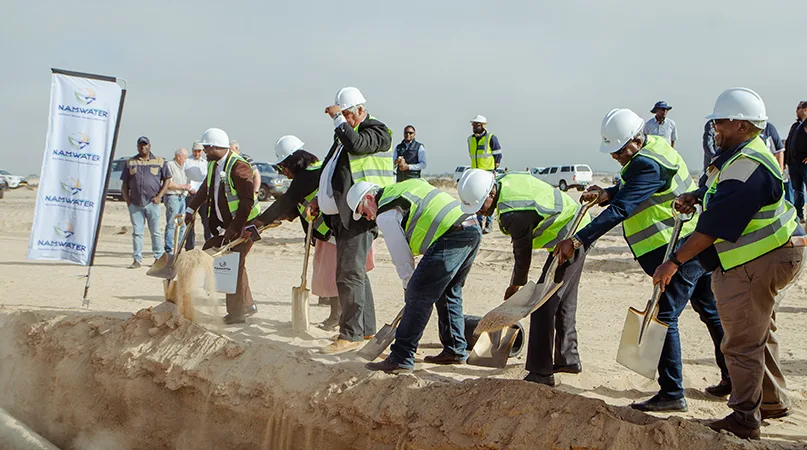
FUTURE-FOCUSED RESILIENCE
As it embarks on an ambitious project to construct a new water pipeline between the Omusati and Oshana regions, NamWater has reaffirmed its commitment to providing reliable water infrastructure for local communities.
The Ogongo-Oshakati Pipeline Replacement and Ancillary Works (Ogongo-Oshakati) project groundbreaking took place on 5th December 2024 at the Ogongo Water Treatment Plant, marking the formal launch of this vital infrastructure upgrade which has progressed steadily ever since.
Undertaken by NamWater in partnership with the Government of Namibia, the project involves replacing an ageing 52.4-kilometre (km) pipeline originally built in the 1970s.
“Once completed, the pipeline will significantly improve the reliability of water supply to communities across the Oshana and Omusati regions, including Oshakati, Oshikuku, and Uukwangula,” Nehemia informs.
Beyond replacing old infrastructure, this initiative demonstrates NamWater’s commitment to sustainable, resilient, and future-focused water service delivery.
With enhanced capacity, safer materials, and an environmentally conscious design, the project will help address long-standing issues such as pipe breaks and low water pressure whilst supporting economic growth and public health.
The pipeline replacement is a key component of Namibia’s broader water sector investment strategy and is aligned with Vision 2030 – a long-term national development plan aimed at transforming the country into a prosperous, industrialised, and knowledge-based society.
It also contributes to the Harambee Prosperity Plan II (HPPII), initiated to ensure Namibia is poised to respond to domestic socioeconomic challenges and global opportunities both during and after the COVID-19 pandemic.
“NamWater remains fully committed to executing the Ogongo-Oshakati project efficiently and transparently, making sure it delivers lasting benefits to the communities we serve,” he prides.
ENSURING LONG-TERM WATER SECURITY
Actively involved in the development of several desalination initiatives, NamWater is responding to a growing demand for water in Namibia.
Its most significant desalination project to date is the Central Coastal Desalination Plant – a government-approved project designed to produce 20 million cubic metres (cbm) of desalinated water annually for the Erongo region.
This project has been undertaken in direct response to rapid population growth and intensified industrial activity in the area, particularly from uranium mining, which has put pressure on local water supplies and highlighted an urgent need to safeguard the region’s depleting aquifers.
“We are currently in the final stages of engaging on the most appropriate modality for implementing the project,” Nehemia updates us.
In 2023, NamWater proposed that the plant be developed through a joint venture with a strategic private sector partner and is now at an advanced stage of finalising these details.
“The desalination plant is part of our broader commitment to ensuring long-term water security for Namibia’s coastal regions by diversifying our water sources through sustainable and climate-resilient infrastructure,” he outlines.
The company is committed to bolstering its contribution to the latter by integrating solar and renewable energy across its plants and processes.
“We’re finalising the NamWater Renewable Energy and Energy Efficiency Policy, which will guide how we manage energy use across all facilities.”
With energy being one of the company’s top operational costs, improving efficiencies by embracing renewable power sources such as solar is critical.
“It’s not only about cutting costs – it’s about ensuring a reliable, affordable, and sustainable water supply for all Namibians, today and in the future,” Nehemia emphasises.
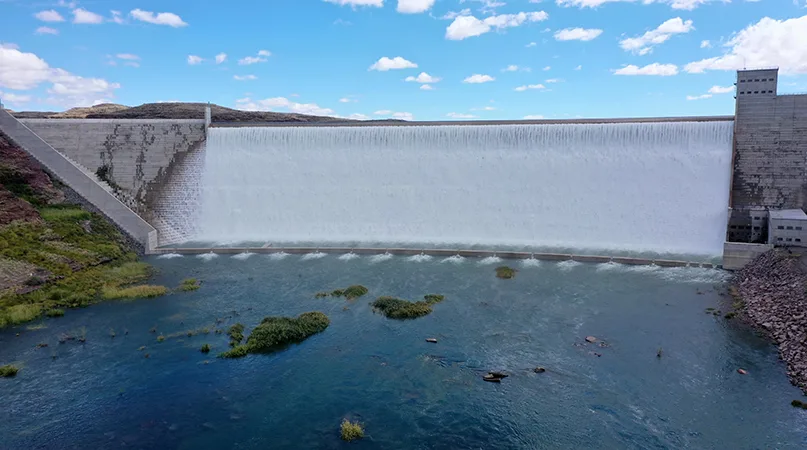
OPERATIONAL EXPANSION
With plans in place to expand its water supply network to the northern and southern coasts as part of its long-term infrastructure strategy, NamWater is providing critical support to Namibia’s emerging green hydrogen industry in the south and intensifying mining activities in the north.
“In the former, reliable water access is a key enabler for hydrogen production, which depends on large volumes of purified water,” Nehemia explains.
The company’s network expansion in the region will analyse local needs to ensure it has the necessary water infrastructure in place to power this transformative sector.
In coastal areas, meanwhile, growing mining operations require sustainable and scalable water supply solutions.
“By strengthening our network towards the coast, we aim to support economic growth whilst safeguarding local water security,” he comments.
Other interventions include easing supply pressure along the Oshakati-Ondangwa-Omuthiya corridor and installing compact desalination units in collaboration with the Ministry of Agriculture, Fisheries, Water, and Land Reform (MAFWLR).
“These expansions reflect NamWater’s commitment to industrial development, the energy transition, and national economic resilience,” Nehemia observes.

“These expansions reflect NamWater’s commitment to industrial development, the energy transition, and national economic resilience”
Abraham Nehemia, CEO, NamWater
DELIVERING NAMIBIA’S FUTURE
Looking ahead, one of NamWater’s top priorities for the remainder of 2025 and beyond is the successful implementation of WSSP II, a transformative national initiative aimed at strengthening the country’s bulk water infrastructure.
With funding secured through the Government of Namibia, WSSP II represents a critical investment in ensuring sustainable and resilient water supply systems, particularly in the central-north and north-east of the country.
A flagship project under WSSP II is the Omundaungilo-Omutsegwonime Bulk Pipeline Scheme, which will see the construction of 130km of new pipelines, development of boreholes and reservoirs, and provision of potable water to over 27,000 people in the Ohangwena and Oshikoto regions.
“This will have a direct impact on public health, economic activity, and quality of life,” Nehemia says.
WSSP II aligns with Namibia’s national development priorities and underscores NamWater’s commitment to equitable water access, sustainable infrastructure, and economic empowerment across all regions of the country.
As the nation builds towards Vision 2030 and beyond, the company remains committed to ensuring that every drop of water contributes to the growth, health, and prosperity of local communities.
“With bold infrastructure, a people-first strategy, and a clear vision, NamWater is not just delivering water – it is delivering a future,” he passionately concludes.



